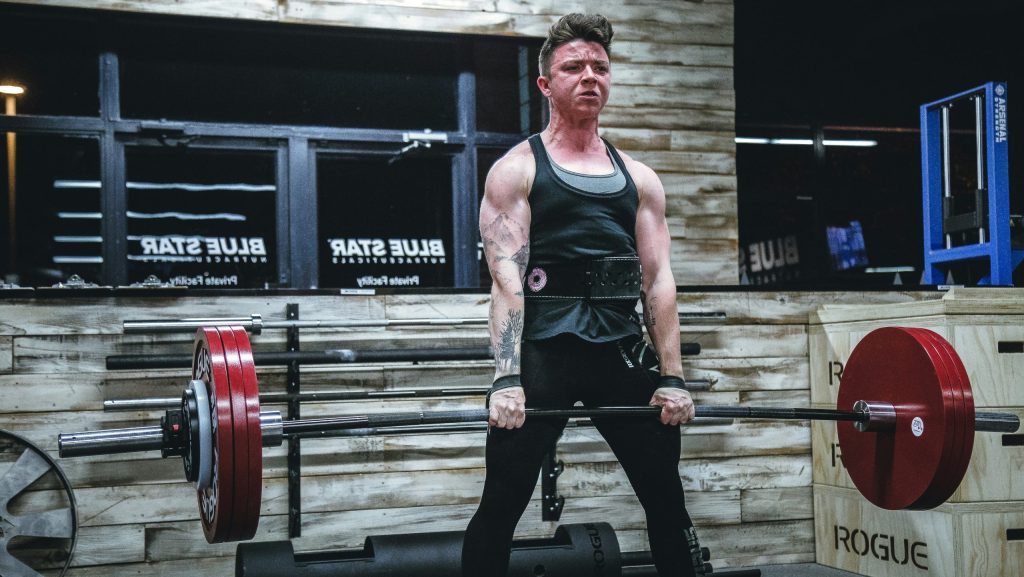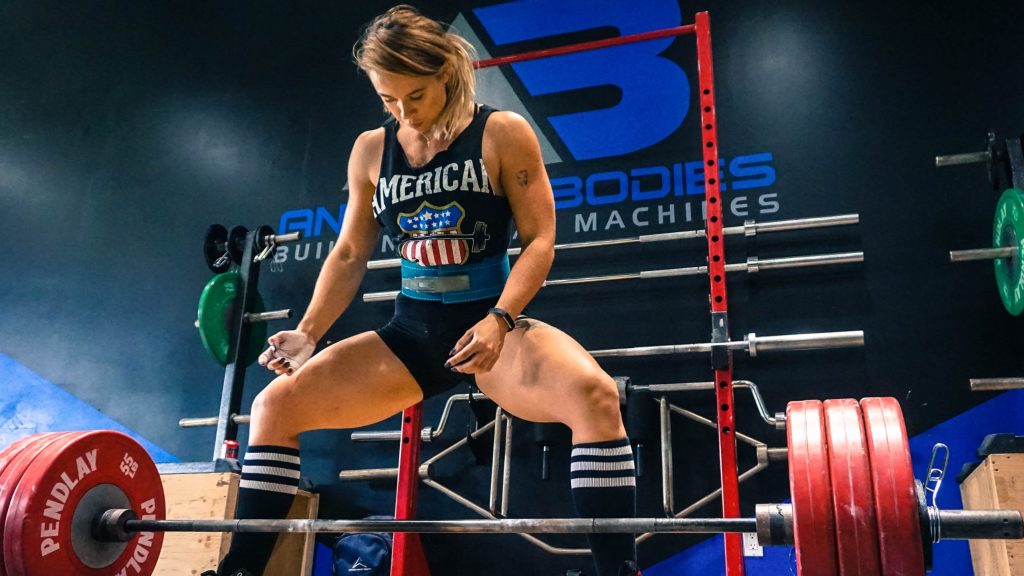Nutrition is a complex field, far from the black-and-white perspective many adopt. It’s a realm laden with varying theories, each presenting a unique approach to achieving wellness and fitness goals. This complexity often leads individuals into a maze of information, trying to separate fact from fiction. The essence of nutrition transcends universal solutions; it demands personalization. Every individual’s journey towards optimal nutrition is shaped by a tapestry of intrinsic factors such as metabolic rate, endocrine functions, and immune response, as well as extrinsic factors like caloric intake and activity levels. These elements play a crucial role in determining how we process and utilize nutrients.
Understanding Your Unique Nutritional Needs
It’s imperative to consider the goals and types of physical activities you’re engaging in when tailoring your diet. For instance, the nutritional demands of a young bodybuilder aiming to bulk up significantly differ from those of a middle-aged marathon runner. This distinction highlights the importance of considering personal goals and activity types in nutritional planning.
The Spectrum of Nutritional Strategies
Nutrition is characterized by its diversity and the breadth of research supporting various dietary approaches. Some individuals thrive on a low-carbohydrate diet, while others find success with a higher intake of carbs, accompanied by a lower fat consumption. Similarly, intermittent fasting may work wonders for some, while others prefer eating small meals throughout the day. The key takeaway is the adaptability of our species; there isn’t a one-size-fits-all approach to nutrition, and our diets can be as varied as our individual needs and preferences.
Navigating the Extremes in Nutrition and Exercise
In the realm of exercise and nutrition, it’s common to encounter extreme viewpoints. For example, the preference for barbell curls over dumbbell curls based on efficiency studies can lead to the misconception that the latter is ineffective. Such all-or-none thinking is not only limiting but also detracts from the goal of finding a balanced and practical approach to nutrition and fitness. The ultimate aim should be to discover what is not only optimal but also feasible for each individual to incorporate into their lifestyle. An approach that might be theoretically perfect but is impractical for one’s daily life is of little value.
In summary, the journey towards optimal nutrition is highly personal, influenced by an array of factors, and should be tailored to individual goals and lifestyles. Understanding the diversity of nutritional strategies and avoiding extreme ideologies are crucial steps in crafting a diet that is both effective and sustainable.
Part I – The Body’s Response to Resistance Training
Resistance training, more than just a method to enhance physical appearance, is a catalyst for profound physiological changes. It engages a complex interplay of biomechanical and biochemical processes that underpin strength gains, muscle hypertrophy, and overall fitness improvements. By dissecting these processes, we gain insights into the resilience and adaptability of the human body, setting the stage for a deeper dive into the mechanisms that drive these changes.
Understanding Physiological Changes During Weight Training
Before delving into nutritional recommendations, it’s essential to grasp the physiological transformations our bodies undergo during resistance or weight training sessions. The effects of resistance training are multifaceted, influenced by variables such as volume, intensity, and frequency. These factors can produce distinct physiological responses, further emphasizing the importance of tailoring training to individual goals, whether for strength or muscle building.
A Typical Training Scenario
Consider a training program consisting of moderate volume (2-3 sets of 6-12 reps per exercise), moderate intensity (challenging yet not leading to failure on the last rep), conducted 3-4 times a week. This regimen is designed to promote muscle growth and strength, striking a balance between activating various muscle fibers.
The Physiological Journey of Resistance Training
Let’s follow a hypothetical individual, John or Jane Doe, through this training regimen to understand the physiological responses to weight training. During exercise, muscles generate force through contraction, utilizing ATP as energy. This process leads to muscle fatigue and eventual failure. While this overview simplifies the complex mechanisms of muscle contraction and fatigue, it highlights the intense, anaerobic nature of weight training.
Post-exercise, muscles undergo damage and accumulate metabolites, triggering an inflammatory response and delayed-onset muscle soreness (DOMS). This response to resistance training catalyzes a series of physiological adaptations.
Benefits Beyond the Muscle
The benefits of consistent weight training extend across various physiological domains, including improved cardiorespiratory function, endocrine system adaptations, and changes in muscle tissue morphology. These benefits manifest both acutely, like vasodilation and enhanced insulin sensitivity, and over time with regular training.
Debunking Muscle Growth Myths
A crucial insight from resistance training is that muscle growth, or hypertrophy, does not occur during the exercise itself but rather during the recovery period, provided the muscles receive adequate nutrition. This underscores the misconception that muscles grow while lifting weights; in reality, growth happens as we recover and nourish our bodies post-workout.
This section underscores the necessity of understanding the body’s response to resistance training as a foundation for optimizing workout nutrition and timing.
The Significance of Nutrient Timing Around Workouts
The concept of nutrient timing emerges as a critical element in the quest for optimal physical performance and recovery and this section explores the strategic orchestration of nutrient intake around workout sessions, a practice known as peri-workout nutrition. This approach is not merely about what we eat but also when we eat, aiming to harness the body’s metabolic and hormonal responses to exercise for enhanced muscle recovery and growth.
Unpacking Peri-Workout Nutrition
Peri-workout nutrition, encompassing the pre, during, and post-workout phases, is pivotal for maximizing the metabolic and hormonal benefits triggered by exercise. This period is often regarded as the “anabolic window of opportunity,” where the body’s heightened state post-exercise, such as the up-regulation of glucose transport proteins in muscle tissues, can be leveraged for optimal muscle recovery and growth.
To Time or Not to Time: The Nutrient Timing Debate
The question of nutrient timing is prevalent among fitness enthusiasts, often sparking debate on its importance. While it’s acknowledged that timing does play a role, the extent of its significance is where perspectives diverge. Contrary to popular belief, when you consume your nutrients ranks lower in priority compared to the overall quality and quantity of your macronutrient and energy intake. However, this doesn’t diminish the potential benefits of strategic nutrient timing, especially when considering individual goals and responses to food.
Nutrient Timing: Body Composition vs. Athletic Performance
To address the nutrient timing question more comprehensively, it’s helpful to separate the discussion into two categories: its impact on body composition and its influence on athletic performance. While scientific literature may not always show a direct correlation between nutrient timing and significant changes in body composition, anecdotal evidence suggests that individuals may experience improved performance and recovery when adhering to specific nutritional timing strategies, whether it means eating certain foods before a workout or fasting.
Finding the Optimal and Practical Approach
The pursuit of an optimal nutritional strategy involves balancing scientific evidence with personal experience. Research provides a framework for understanding general principles, but individual adaptation and practicality ultimately dictate the most effective approach. The goal is to find what not only aligns with scientific recommendations but also fits seamlessly into one’s lifestyle, ensuring that the benefits of peri-workout nutrition are fully realized without compromising daily routines or preferences.
In conclusion, while nutrient timing may not be the pinnacle of nutrition hierarchy, its role in enhancing workout performance and recovery cannot be overlooked. The key is to approach nutrient timing with flexibility, tailoring it to individual needs and preferences to maximize its potential benefits
Enhancing Body Composition: Balancing Muscle Growth and Fat Loss
The goal to sculpt a physique that boasts increased muscle mass while reducing body fat is akin to walking a tightrope. It requires a harmonious blend of dietary discipline, meticulous training, and unwavering dedication. The quest for an enhanced body composition is not merely a pursuit of aesthetic improvement but a testament to one’s commitment to health and physical prowess.
The Challenge of Simultaneous Muscle Growth and Fat Loss
Achieving the dual goals of maximizing fat burning and muscle hypertrophy represents a significant challenge in fitness and bodybuilding. Theoretically, these objectives are mutually exclusive, leading many to believe that one cannot efficiently target both muscle growth and fat loss simultaneously without the aid of performance-enhancing drugs (PEDs). This predicament has long puzzled physique competitors and fitness enthusiasts alike, suggesting a need to navigate these goals with strategic nutritional and training approaches.
Beyond the Scale: The Importance of Body Composition
A common oversight in setting fitness goals is the singular focus on body weight as a measure of progress. Solely aiming for weight loss or gain overlooks the crucial aspect of body composition— the ratio of muscle to fat. Improving body composition means enhancing this ratio by either increasing muscle mass while minimizing fat gain or reducing fat mass while preserving muscle.
Practical Examples of Improving Body Composition
Consider a hypothetical scenario with Brutus Biceps, who aims to improve his physique. If Brutus adds 5 pounds of muscle to his frame with only a 2-pound increase in fat, he has successfully enhanced his body composition. Conversely, if he loses 5 pounds of fat while only sacrificing 1 pound of muscle, his body composition has again improved. These examples illustrate the goal of body composition improvement: to either maximize muscle hypertrophy with minimal fat gain or optimize fat loss while preserving muscle mass.
Strategies for Optimizing Body Composition
Improving body composition requires a nuanced approach, blending nutrition, training, and recovery strategies. It involves not just a focus on the scale but an understanding of how to effectively balance calorie intake, macronutrient distribution, and exercise regimens to target specific body composition goals. Whether the aim is to build muscle or lose fat, the key is to adopt practices that support the desired outcome while acknowledging the inherent challenges in achieving both simultaneously.
In summary, improving body composition is a dynamic process that transcends simple weight gain or loss. It demands a strategic approach to nutrition and training, with an emphasis on optimizing the muscle-to-fat ratio. This journey involves continual adjustment and personalization to meet individual goals, showcasing the complexity and reward of enhancing one’s physique.
Maximizing Muscle Growth through Optimal Protein Turnover
The Foundation of Muscle Anabolism
Understanding muscle hypertrophy necessitates a grasp of the net protein turnover ratio, a critical determinant of whether muscle growth (anabolism) or muscle breakdown (catabolism) is occurring. This ratio compares muscle protein synthesis (MPS) to muscle protein breakdown (MPB), with a positive balance (MPS > MPB) indicating muscle growth. Various factors, including exercise, nutrition, health status, and even genetics, can influence this delicate balance.
The Role of mTOR in Muscle Growth
Central to the regulation of muscle protein synthesis is the mammalian target of rapamycin (mTOR), a protein encoded by the FRAP1 gene. mTOR functions as a crucial component of protein complexes like mTORC1 and mTORC2, which are pivotal in activating protein synthesis under the right cellular conditions, leading to muscle growth and development. While the pathways regulating protein synthesis are complex, understanding the role of mTOR provides a foundation for strategies aimed at enhancing muscle hypertrophy.
Strategies for Optimizing the mTOR Pathway
The activity of mTOR and, by extension, muscle protein synthesis, is influenced by several key factors:
- Cellular Energy State: A cell’s energy availability can modulate mTOR activity, with sufficient energy promoting an anabolic state.
- Growth Factors and Hormones: Insulin is particularly influential in mTOR signaling, highlighting the role of hormonal balance in muscle growth.
- Nutrient Availability: Adequate intake of specific nutrients, especially amino acids, is critical for stimulating mTOR and supporting muscle protein synthesis.
- Oxidative Stress: Managing oxidative stress through antioxidants can also affect mTOR activity and muscle growth.
Practical Implications for Muscle Hypertrophy
To optimize muscle growth, the goal is to enhance these mTOR-activating signals. This involves not just focusing on exercise but also ensuring adequate nutrient intake, particularly of proteins and amino acids, to sustain high rates of muscle protein synthesis while minimizing muscle protein breakdown. Additionally, maintaining a balanced hormonal environment and managing oxidative stress through lifestyle and dietary choices can further support the anabolic process.
In summary, optimizing muscle hypertrophy involves a multifaceted approach that includes targeted exercise, strategic nutrition, and overall health management. By focusing on factors that influence the net protein turnover ratio in favor of muscle protein synthesis, individuals can maximize their muscle growth potential in a sustainable and effective manner.
Enhancing Fat Loss: The Role of AMPk in Fat Metabolism
The Contrasting Pathways of Muscle Growth and Fat Loss
Optimizing fat loss involves mechanisms that are, to some extent, opposite to those supporting muscle hypertrophy. The key player in fat metabolism is the enzyme adenosine monophosphate-activated protein kinase (AMPk), which acts as a critical regulator in various tissues throughout the body. Understanding how to manipulate AMPk activity can provide valuable insights into effective fat loss strategies.
AMPk: The Metabolic Master Switch
AMPk is activated under conditions of cellular energy deficit, such as during exercise or times when glucose is scarce. This activation signals the cell’s need to generate more ATP, the primary energy currency, from alternative sources, namely fat stores. Here’s how AMPk influences fat metabolism:
- Promoting Lipolysis and Fatty Acid Oxidation: AMPk activation leads to an increase in the breakdown of fat (lipolysis) and the subsequent oxidation of fatty acids, essentially turning fat into usable energy.
- Enhancing Glucose Uptake: By improving glucose uptake in muscle tissue, AMPk helps optimize energy utilization and supports metabolic health.
- Inhibiting Lipogenesis: AMPk suppresses the synthesis of new fat (lipogenesis), further supporting fat loss efforts.
Strategies to Activate AMPk for Fat Loss
Given the pivotal role of AMPk in fat metabolism, activating this enzyme can be a strategic approach to enhancing fat burning. Key methods to stimulate AMPk include:
- Exercise: Physical activity, especially high-intensity and endurance training, effectively reduces the ATP:ADP ratio, thereby activating AMPk.
- Nutrient Timing and Diet Composition: Managing intake times and focusing on a diet that prevents excessive glycogen stores can help maintain a state conducive to AMPk activation.
- Caloric Restriction: Intermittent fasting or caloric restriction can also trigger AMPk by creating the necessary energy deficit.
Balancing AMPk Activation with Muscle Maintenance
While optimizing AMPk activity is crucial for fat loss, it’s important to balance this with the needs of muscle maintenance and growth. This balancing act involves integrating exercise routines that promote both AMPk activation and mTOR signaling, alongside a diet that supports muscle protein synthesis without inhibiting AMPk unnecessarily.
In summary, understanding and manipulating AMPk activation offers a scientific basis for enhancing fat loss while maintaining muscle. Through strategic exercise, diet, and lifestyle choices, it’s possible to optimize fat burning mechanisms in the body, contributing to improved body composition and overall metabolic health.
The Delicate Balance: Navigating the AMPk-mTOR Relationship
The Antagonistic Nature of Muscle Building and Fat Loss
The journey to optimize body composition often encounters the physiological tug-of-war between the goals of muscle hypertrophy and fat oxidation. At the heart of this struggle lies the complex interplay between AMPk and mTOR, two pathways that essentially function in opposition to each other. AMPk, the metabolic switch for fat burning, inhibits mTOR, the key driver of muscle protein synthesis. Conversely, activation of mTOR can suppress AMPk activity, illustrating the body’s prioritization between building muscle and burning fat based on cellular energy status.
Understanding the AMPk-mTOR See-Saw
This antagonistic relationship underscores a fundamental biological principle: the body’s energy state can either support muscle growth or fat loss at any one time, but not both simultaneously. This AMPk-mTOR “see-saw” reflects the body’s need to balance energy production and consumption, with shifts in the ATP:ADP ratio dictating which metabolic pathway takes precedence.
Strategic Alternation Between Pathways
Despite these challenges, it’s possible to strategically alternate between activating AMPk and mTOR to improve body composition over time. Approaches such as yo-yo dieting, intermittent fasting, and targeted refeeding protocols can manipulate these pathways to encourage periods of fat loss followed by muscle building. This cyclical strategy allows individuals to leverage the inherent see-saw dynamic between AMPk and mTOR, optimizing body composition through phased focuses on either fat loss or muscle growth.
Practical Implications for Fitness and Nutrition
The key to navigating the AMPk-mTOR relationship lies in understanding the timing and nature of workouts and nutrition. For instance, engaging in high-intensity or endurance exercises can activate AMPk and promote fat oxidation, while consuming protein-rich meals post-workout can stimulate mTOR and support muscle synthesis. This strategic toggling between pathways, aligned with one’s fitness goals and recovery needs, can facilitate a more nuanced approach to body composition improvement.
In essence, the AMPk-mTOR see-saw presents both a challenge and an opportunity for those seeking to enhance their physique. By acknowledging and respecting these biochemical dynamics, individuals can craft a more informed and adaptive strategy for achieving their body composition goals, even if it means not maximizing both objectives at every moment.
Part II: Macronutrient Breakdown and Protein’s Role in Muscle Synthesis
The Importance of Protein Source for Muscle Protein Synthesis
When it comes to nutrition’s role in supporting muscle growth, the focus often shifts to protein intake and its quality. Proteins, composed of amino acids, are essential for muscle protein synthesis (MPS), acting as the building blocks required for muscle development. The presence and concentration of amino acids within cells are crucial for regulating mTOR protein complexes, pivotal in muscle anabolism.
Leucine: The Key to Muscle Protein Synthesis
Research underscores the significance of amino acid composition in dietary proteins, particularly the content of leucine. Leucine is an amino acid known for its potent ability to trigger mTOR activation, thereby promoting MPS. Studies, including those by Norton et al., have demonstrated that protein sources with high leucine content, such as whey and eggs, significantly stimulate MPS post-consumption, more so than other protein types with lower leucine levels.
Comparing Protein Sources
The debate around the optimal protein source for muscle building often circles back to the amino acid profile, specifically the presence of leucine and other essential amino acids (EAAs). Current research suggests that when a protein source provides adequate leucine and EAAs, the differences in MPS rates between various sources (like milk, animal proteins, and egg proteins) are minimal. What matters most is not the protein source per se but its leucine and EAA content.
The Optimal Quantity of Leucine and EAAs
The key takeaway from the discussion on protein sources and MPS is the importance of consuming enough leucine and EAAs to maximize the MPS response. While the exact quantity needed to achieve this varies among individuals, ensuring that your diet includes protein-rich foods with high leucine content is essential for supporting muscle growth.
In summary, the selection of protein sources should be guided by their amino acid profile, emphasizing the importance of leucine and EAAs for effective muscle protein synthesis. By focusing on the quality and composition of protein intake, individuals can optimize the nutritional signals necessary for muscle growth, laying a solid foundation for achieving their fitness and physique goals.
Protein Intake: Navigating Quantity for Muscle Synthesis
A prevailing myth within the fitness and bodybuilding communities suggests a strict limit to the amount of protein the body can utilize in a single meal, often cited around 50 grams. This belief, however, lacks scientific backing. The body’s capacity to digest and process protein—and macronutrients in general—is far more adaptable than such rigid numbers imply. The more pertinent question revolves around the amount of protein intake that can sustain an elevated rate of muscle protein synthesis (MPS) without reaching a point of diminishing returns.
Understanding Protein Utilization and MPS
Recent studies have shed light on this issue, indicating that the body’s response to protein intake, especially in relation to MPS, is not merely a matter of quantity but also of quality and timing. For instance, research has shown that adding leucine to whey protein does not significantly alter whole-body protein turnover, suggesting that the benefits of protein supplementation might be more nuanced than previously thought.
The Role of Leucine in MPS
Leucine content in a meal has been identified as a critical factor in triggering MPS. Findings suggest that the initial peak of MPS is proportional to a meal’s leucine content, highlighting the importance of leucine-rich foods for optimizing muscle growth. Additionally, extending MPS’s duration beyond the immediate post-meal period can be achieved through strategic supplementation with leucine or carbohydrates, assuming meals are adequately spaced to allow MPS levels to return to baseline.
Practical Guidelines for Protein Consumption
Based on current research, a practical guideline for active individuals is to aim for at least 30 grams of a leucine-rich protein source per meal to effectively stimulate MPS for several hours. This recommendation serves as a baseline for those looking to optimize muscle growth, though individual needs may vary based on factors like total daily protein intake, exercise intensity, and overall diet.
The concept of a universal protein intake limit per meal is overly simplistic and not supported by scientific evidence. Instead, focusing on the quality of protein—particularly its leucine content—and the timing of consumption offers a more effective strategy for maximizing muscle protein synthesis. By adopting a flexible approach to protein intake, individuals can better support their muscle-building goals while accommodating their unique dietary needs and preferences.
Carbohydrates, Insulin, and Muscle Synthesis: Finding the Balance
Debunking Extremes in Carbohydrate Intake
The debate over carbohydrate intake often polarizes into “high-carb” versus “no-carb” camps, fueled by misconceptions about insulin’s role in the body. Contrary to popular belief, completely eliminating carbohydrates from the diet does not halt insulin secretion, as amino acids from protein can also stimulate insulin production. Moreover, research suggests no significant metabolic advantage to chronic low-carb dieting over a more balanced, moderate-carb approach, with benefits of very-low carb diets typically observed only in short-term scenarios.
Insulin: An Anabolic Ally
Insulin’s reputation as a mere “storage” hormone belies its critical role in muscle anabolism. Fears that insulin triggers rampant fat storage are misplaced, especially for individuals focused on muscle growth. Insulin facilitates muscle protein synthesis (MPS) by enhancing the uptake of amino acids into muscle cells, making it a valuable ally in the quest for hypertrophy. Studies show that co-ingesting carbohydrates with protein to stimulate insulin secretion can amplify the MPS response, leveraging insulin’s anabolic potential.
Optimizing Carbohydrate Intake for Muscle Growth
The strategy for carbohydrate intake should aim for balance rather than excess. A moderate amount of carbohydrates can elicit a sufficient insulin response to support MPS without the need for extreme “carb-loading.” It’s important to note that the relationship between insulin levels and MPS is not linear beyond a certain point; excessive insulin spikes, especially those achieved through pharmacological means, do not proportionally increase MPS and are impractical for most fitness enthusiasts.
Practical Guidelines for Carbohydrate Consumption
When it comes to optimizing muscle growth through diet, the goal should be to consume a balanced amount of carbohydrates that supports insulin secretion beneficial for MPS. The exact quantity of carbohydrates needed will vary based on individual factors, including activity level, goals, and overall diet. There’s no need to concentrate carbohydrate intake excessively in any single meal, even post-workout, as a balanced approach throughout the day can efficiently support muscle synthesis and recovery.
Carbohydrates and insulin play critical roles in supporting muscle growth, acting synergistically with protein to enhance muscle protein synthesis. By moving beyond the extremes of carbohydrate intake and understanding insulin’s beneficial role in muscle anabolism, individuals can more effectively tailor their diets to support their fitness and body composition goals. The key is moderation and balance, ensuring that carbohydrate intake is aligned with one’s overall nutritional strategy for optimal health and muscle development.
Carbohydrate Sources and Their Impact on Insulin and Muscle Synthesis
Rethinking Carbohydrate Sources
The debate around carbohydrate sources often centers on the glycemic index (GI) and its impact on insulin levels. However, for most people consuming balanced meals—that include fats, proteins, and carbohydrates—the specific source of carbs plays a secondary role to the overall intake. The pursuit of insulin spikes through high-GI carbs, like dextrose, in an attempt to enhance muscle protein synthesis (MPS), has been shown to be unnecessary and, in some cases, less beneficial than once thought.
The Myth of High-Glycemic Carbs for Insulin Spiking
The strategy of using high-GI carbohydrates to dramatically increase insulin levels does not provide the anticipated benefits in MPS beyond what can be achieved with a moderate insulin response. This moderate response can be obtained from lower-GI carbohydrate sources, such as oats and sweet potatoes, which do not lead to the extreme fluctuations in blood sugar levels associated with high-GI carbs. This insight shifts the focus from the glycemic index of carbs to the overall quality and composition of the diet.
Glycemic Load and Meal Composition
It’s important to recognize that the glycemic impact of foods is not static but varies based on meal composition. The presence of fats, proteins, and fibers in a meal can significantly lower the glycemic load of high-GI carbohydrates by slowing digestion and the release of glucose into the bloodstream. This interaction suggests a more nuanced approach to carbohydrate selection, emphasizing the importance of meal context over individual food items’ GI values.
A Practical Approach to Carbohydrate Intake
The practical takeaway is a call for moderation and diversity in carbohydrate sources. Rather than focusing solely on the glycemic index, the goal should be to incorporate a variety of carb sources, balancing high-GI foods with those that offer slower, more sustained energy release. This balanced approach supports insulin management, enhances dietary satisfaction, and provides a stable energy source for muscle synthesis and recovery.
Understanding the role of carbohydrate sources and their glycemic impact is crucial for optimizing nutrition for health and muscle growth. By moving beyond simplistic high-GI versus low-GI dichotomies and considering the holistic context of meals, individuals can better manage insulin response, support muscle protein synthesis, and achieve a more balanced and effective dietary strategy. Moderation, variety, and meal composition are key principles guiding carbohydrate selection in a diet aimed at supporting both fitness and overall health.
Understanding Dietary Fats: Saturated and Unsaturated Fats
The Role of Fats in the Diet
Fats are an essential component of a balanced diet, offering high energy density (9 calories per gram) and contributing significantly to satiety. Beyond their role as an energy source, fats are crucial for maintaining cellular integrity and supporting various cellular functions. For active individuals, consuming an adequate amount of fats is vital for overall health and performance.
Saturated Fats: Myths and Realities
Saturated fats, often maligned in popular media and diet culture, actually play a significant role in a healthy diet. These fats, characterized by hydrocarbon chains fully saturated with hydrogen atoms, are found in foods like coconut oil, which is rich in medium-chain triglycerides (MCTs). MCTs are notable for their ability to be readily used for energy rather than stored as fat. Additionally, saturated fats have been linked to the production of sex hormones, such as androgens, in males.
However, moderation is key. While a nominal intake of saturated fats can be beneficial, excessive consumption is associated with insulin resistance and an increased risk of metabolic disorders. A balanced approach would involve consuming approximately 25% of total fat intake from saturated sources, ensuring a healthy balance with unsaturated fats.
Unsaturated Fats: Essential for Health
Unsaturated fats, which include monounsaturated and polyunsaturated fatty acids, are distinguished by the presence of one or more carbon-carbon double bonds. These fats are predominantly found in nuts, vegetable oils, and fatty fish, with omega-3 fatty acids being a critical type of polyunsaturated fat. Omega-3s are essential for preventing metabolic disorders and supporting heart health.
The recommendation for omega-3 fatty acid intake suggests a supplementation of 3.5 grams, with a ratio of 2:1 between DHA and EPA, to support health, though active individuals may require more. Given their extensive benefits, the majority of dietary fat should ideally come from mono- and polyunsaturated sources.
Practical Dietary Fat Recommendations
For optimal health and performance, it is essential to include both saturated and unsaturated fats in the diet, with a focus on ensuring a significant portion of fat intake comes from unsaturated sources. This balanced approach supports not only metabolic and heart health but also aids in maintaining hormonal balance and energy levels. By understanding the roles and benefits of different types of fats, individuals can make informed choices that contribute to a well-rounded and nutritious diet.
Part III: Crafting Your Peri-Workout Nutrition Strategy
Navigating the intricacies of peri-workout nutrition involves understanding the three pivotal phases: preparation, performance, and replenishment. These phases are instrumental in priming the body for exercise, sustaining energy levels during workouts, and facilitating recovery afterward.
The Three Pillars of Peri-Workout Nutrition
Peri-workout nutrition revolves around three critical phases: preparation before training, fueling during the workout, and replenishing after the session. These phases are designed to optimize the body’s readiness for exercise, sustain energy and performance during the workout, and facilitate recovery and muscle growth post-exercise. While the concept might seem straightforward, finding the optimal nutritional approach within each phase involves navigating through various theories and practices.
Individualization of Peri-Workout Nutrition
The challenge in formulating a one-size-fits-all peri-workout nutrition plan lies in the individual differences among athletes and fitness enthusiasts. Factors such as metabolic rate, training intensity, duration, personal goals, and even genetic predispositions influence the efficacy of a nutritional strategy. Therefore, while general guidelines can provide a foundation, personal experimentation and adjustment are key to tailoring a plan that best supports an individual’s training and recovery needs.
General Protocols for Peri-Workout Nutrition
Despite the personalized nature of nutrition, certain principles of peri-workout nutrition hold true across the board:
- Preparation: The goal before training is to ensure the body is adequately fueled and ready for the demands of the workout. This often involves consuming a meal or snack rich in complex carbohydrates and protein approximately 2-3 hours before exercise, providing a steady source of energy and amino acids for muscle preservation and performance enhancement.
- Performance: During the workout, maintaining hydration and energy is paramount. For prolonged sessions, easily digestible carbohydrates can help sustain energy levels, while electrolyte replenishment supports hydration and prevents cramping.
- Replenishment: Post-workout nutrition focuses on recovery and growth, emphasizing protein for muscle repair and carbohydrates to replenish glycogen stores. The timing of this meal can vary, but consuming nutrients within a couple of hours post-exercise is generally recommended to maximize recovery and facilitate muscle growth.
Fine-Tuning Based on Individual Needs
Building upon these foundational principles, individuals can fine-tune their peri-workout nutrition by considering their specific training intensity, duration, and personal goals. For instance, someone focusing on endurance training may prioritize carbohydrate intake more heavily throughout the peri-workout period, whereas strength-focused athletes might emphasize protein supplementation post-workout to support muscle repair and growth.
Optimizing peri-workout nutrition is a dynamic process that balances general dietary principles with individual needs and preferences. By understanding the basic requirements of each phase—prepare, perform, and replenish—and being willing to adjust based on personal experiences and goals, athletes and fitness enthusiasts can develop a peri-workout nutrition plan that enhances performance, supports recovery, and contributes to overall training success.
Phase I: Preparing for Your Workout
In the pursuit of peak performance, Phase I: Preparing for Your Workout lays the groundwork for success. This phase encompasses critical decisions regarding pre-workout nutrition, with considerations spanning from the choice between fasted and fed training to the optimization of macronutrient intake tailored to individual goals and preferences. Let’s delve into the intricacies of this phase to understand how it influences performance outcomes.
Fasted vs. Fed Training
The debate between fasted and fed training continues to be a topic of discussion within the fitness community. While fasted training has its proponents, who cite anecdotal evidence of its benefits, the scientific community remains divided on whether it offers significant metabolic advantages over training in a fed state. For those who prefer fasted training, skipping pre-workout nutrition is a deliberate choice aimed at achieving specific results, and such an approach can indeed lead to success for many.
The Role of Carbohydrates Before Training
Conventional wisdom, particularly among endurance athletes, suggests loading up on carbohydrates before an event to maximize muscle glycogen stores. This strategy is based on the body’s preference for glucose as a quick source of energy during exercise. Sports drinks like Gatorade, with their simple sugars and electrolytes, embody this approach by offering an easily digestible energy boost.
Rethinking Pre-Workout Nutrition for Muscle Growth and Performance
However, this carb-loading strategy may not align with goals beyond endurance, such as muscle hypertrophy, minimizing muscle catabolism, and overall performance enhancement. Bodybuilders and physique competitors, for instance, aim for a balance between muscle growth and fat loss, making the traditional carb-heavy pre-workout meal less ideal.
The Ideal Pre-Workout Meal
The pre-workout period should focus on mental preparation and consuming a meal that energizes without causing sluggishness. Performance, both in the gym and in competition, is paramount; overeating or consuming the wrong types of food pre-workout can hinder rather than help.
A “nominal meal” before a workout varies by individual but generally includes a source of leucine-rich protein to stimulate muscle protein synthesis (MPS), accompanied by carbohydrates and fats tailored to personal tolerance and preferences. This approach ensures the body is adequately primed for exercise, with MPS elevated and energy levels optimized for peak performance.
Practical Recommendations
- For Fasted Training Enthusiasts: Proceed directly to considerations for during and post-workout nutrition.
- For Fed Training Advocates: Aim for a balanced meal 2-3 hours before exercise, focusing on a solid protein source (20-30+ grams) to ensure MPS, and complement with carbs and fats based on individual energy needs and dietary preferences.
The key is to find what works best for you, ensuring you are both physically and mentally prepared for the demands of your workout, with a nutritional strategy that supports your overall fitness and body composition goals.
Phase II: Nutrition During Your Workout
Understanding Intra-Workout Nutrition Needs
The necessity of consuming nutrients during a workout can vary greatly depending on the type, intensity, and duration of the activity, as well as the timing and composition of the pre-workout meal. For many, if a substantial meal has been consumed 1-3 hours before the workout, the body is likely adequately prepared and fueled, diminishing the immediate need for intra-workout nourishment.
Who Benefits from Intra-Workout Nutrition?
- Endurance Athletes: Those engaged in prolonged athletic events or endurance training may find significant benefits in consuming simple carbohydrates during their sessions. Solutions like Gatorade can help replenish glycogen stores mid-activity, sustaining energy levels and performance.
- Resistance Training and High-Intensity Workouts: For individuals participating in intense gym sessions, especially those who prefer fasted training or have long intervals between meals and exercise, supplementing with essential amino acids (EAAs) or branched-chain amino acids (BCAAs) can be advantageous. These supplements can help mitigate muscle catabolism and support ongoing muscle protein synthesis during the workout.
Practical Intra-Workout Nutrition Strategies
- Simple Carbohydrates: A carbohydrate solution can provide a quick energy source to replenish glycogen stores for those in need, especially useful for endurance training or high-intensity workouts extending beyond an hour.
- EAAs/BCAAs: Ingesting EAAs or BCAAs can support muscle preservation and energy, particularly beneficial for those training on an empty stomach or after long periods without food. This approach helps maintain an anabolic environment, reducing muscle breakdown during strenuous exercise.
- Combination of Carbohydrates and Proteins: For extended workouts, a combination of carbohydrates with EAAs/BCAAs or whey protein can offer a more comprehensive approach, supporting both energy needs and muscle synthesis. However, this is more of an optional strategy rather than a strict requirement for most gym-goers.
While intra-workout nutrition is not mandatory for everyone, it can provide specific benefits under certain conditions, particularly for endurance athletes or those experiencing long gaps between meals and exercise. The decision to incorporate intra-workout nutrition should be based on individual needs, workout characteristics, and personal goals, ensuring that it complements rather than complicates the overall training and nutrition strategy.
Phase III: Post-Workout Nutrition and the “Anabolic Window”
Post-workout nutrition has long been associated with the concept of an “anabolic window,” suggesting an immediate need for nutrient consumption to maximize muscle recovery and growth. However, recent insights challenge this notion, emphasizing practicality over urgency.
Debunking the Anabolic Window Myth
The concept of an urgent “anabolic window” that requires immediate nutrition post-workout has been a longstanding topic of debate. Research and practical experience have shown that the window for optimizing muscle recovery and growth is not as narrowly defined as once thought. The rush to consume a protein shake immediately after the last set is more myth than necessity, with broader timeframes still offering beneficial effects for muscle synthesis and recovery.
Practical Timing for Post-Workout Nutrition
It’s important to approach post-workout nutrition with a sense of practicality rather than urgency. The belief that immediate consumption of protein or carbohydrates is critical for muscle growth is overstated. While nutrition following a workout is important, there is flexibility in timing. Eating a meal 1 to 2 hours after training is generally sufficient for most individuals, without fear of negative impacts on muscle growth if delayed slightly.
Insulin Spikes and Carbohydrate Consumption
The need to drastically “spike” insulin levels post-workout through high-glycemic carbohydrates is not supported by evidence as a requirement for muscle recovery. Simple carbohydrates post-workout can aid in glycogen replenishment but are not mandatory for everyone, especially for those not engaging in exogenous insulin use. The focus should be on meeting overall daily macronutrient and caloric needs rather than on acute post-workout spikes.
Strategies for Post-Workout Nutrition
- For those unable to eat immediately: A protein shake combined with some form of carbohydrate and fats can serve as an effective stopgap until a full meal is available. This approach ensures that muscle protein synthesis is supported and recovery processes begin.
- EAAs/BCAAs as an interim solution: Especially for individuals who train fasted or cannot consume a complete meal shortly after exercise, sipping on essential amino acids (EAAs) or branched-chain amino acids (BCAAs) can help mitigate muscle protein breakdown and support recovery until a meal is consumed.
Post-workout nutrition should be tailored to individual schedules, preferences, and nutritional goals rather than adhering strictly to the mythologized “anabolic window.” The key is to consume a balanced meal rich in protein, carbohydrates, and fats within a reasonable time after training to support recovery and muscle growth. Flexibility in timing allows for a practical approach to nutrition that can easily integrate into daily life, ensuring that fitness and muscle-building goals are met without unnecessary stress or urgency.
Citations:
- Nutrient Timing: A Garage Door of Opportunity? Read more.
- Defining a Healthy Diet: Evidence for the Role of Contemporary Dietary Patterns in Health and Disease Read more.
- Comprehensive Approaches to Improving Nutrition: Future Prospects Read more.
- Physiological adaptations to resistance exercise. Implications for athletic conditioning Read more.
- International society of sports nutrition position stand: nutrient timing Read more.
- Effect of exercise training on weight loss, body composition changes, and weight maintenance in adults with overweight or obesity: An overview of 12 systematic reviews and 149 studies Read more.
- Maximizing Muscle Hypertrophy: A Systematic Review of Advanced Resistance Training Techniques and Methods Read more.
- The New Role of AMP-Activated Protein Kinase in Regulating Fat Metabolism and Energy Expenditure in Adipose Tissue Read more.
- mTOR/AMPK signaling in the brain: Cell metabolism, proteostasis and survival Read more.
- Recent Perspectives Regarding the Role of Dietary Protein for the Promotion of Muscle Hypertrophy with Resistance Exercise Training Read more.
- Nutrition and muscle protein synthesis: a descriptive review Read more.
- Is carbohydrate needed to further stimulate muscle protein synthesis/hypertrophy following resistance exercise? Read more.
- A healthy approach to dietary fats: understanding the science and taking action to reduce consumer confusion Read more.
- Advances in Understanding the Interplay between Dietary Practices, Body Composition, and Sports Performance in Athletes Read more.
- What Should I Eat before Exercise? Pre-Exercise Nutrition and the Response to Endurance Exercise: Current Prospective and Future Directions Read more.
- Role of nutrition in performance enhancement and postexercise recovery Read more.
- Nutrient timing revisited: is there a post-exercise anabolic window? Read more.








